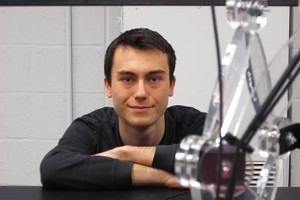
Over two decades ago, structural design office Schlaich Bergermann and Partner introduced and applied a structural principle through which full-scale soccer stadiums could be covered using less than 15 kg/m2 (0.5 lb/ft2) of material, having since completed over 30 projects worldwide. These so-called looped cable roof structures obtain their stiffness through the combined action of ‘rim’ and ‘spokes’, becoming highly efficient both above and under ground.
How do these structures work? What approaches can the designer use to maintain flexibility throughout the design process and providing an optimal, architecturally pleasing and structurally expressive result? My work consists of a transition from conceptual hand-calculations to parametric finite element- and geometric modeling tools to develop preliminary design guides based on the case study of a tennis stadium. Structural design is approached from a more scientific perspective, and the interaction between simple engineering intuition and powerful parametric modeling tools looked at in the framework of a real project.
Smart Mast:
http://www.youtube.com/watch?v=mNszIzQ2L9g
Publications:
Glisic B., Adriaenssens S., Szerzo P. (2013). ‘Structural Analysis and Physical Validation of a Smart Pantograph Mast Concept’. In: Computer Aided Civil and Infrastructure Engineering. DOI: 10.1111/mice.12013
